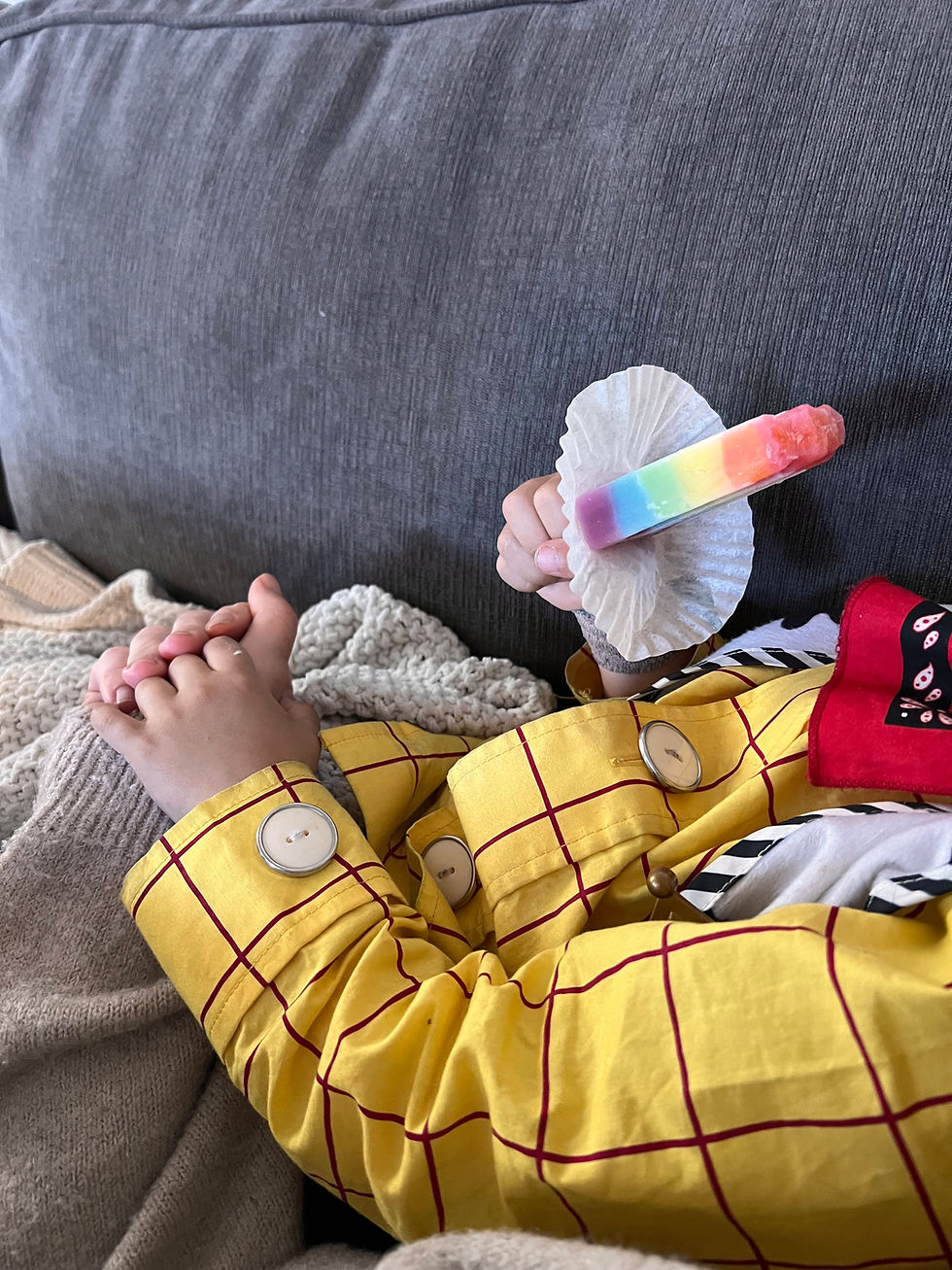Let’s Talk About Food! Turning Eating Moments into Language Wins
- Danielle Giarratano

- Jun 30
- 4 min read
(Especially During Summer ☀️)
As a speech therapist and a toddler mom who has faced the challenge of an untouched dinner plate more times than I can count, I truly understand your struggles. Summer meals—whether it's a BBQ, a park picnic, or a chaotic family vacation—can feel like a blend of fun, mess, and the all-too-common picky eating battles.
But here's the great news: Every mealtime, even the messy ones, offers a fantastic opportunity to enhance your child’s speech and language skills.
So, how do we make summer meals less stressful and more enriching for language development?
Let’s dive in!
Why Mealtime = Language Time
When kids eat, they are doing more than just satisfying their hunger. During mealtimes, they are:
Making choices: Kids often decide between different food options.
Expressing likes and dislikes: They communicate preferences, aiding their ability to articulate feelings.
Practicing social words: Phrases like “please,” “more,” and even “no thank you” are used.
Learning to take turns in conversation: This skill is essential for effective communication.
Research shows that children who engage in conversation during meals are 50% more likely to develop stronger language skills. The natural back-and-forth at the table is crucial for their communication growth.
5 Easy Ways to Support Language at the Table
1. Model Simple Phrases
Instead of bombarding your child with rapid-fire questions like the following:
“Do you want more?"
"Are you done?"
"Do you like it?”
Try using short statements they can easily mimic:
“I want ketchup.”
“Yummy! I like apples.”
“All done.”
This approach encourages toddlers to use their words without feeling overwhelmed.
2. Use Visuals (Because pictures > power struggles)
If your toddler isn’t verbal yet or feels anxious at mealtime, a choice board containing pictures of various foods can be very helpful. This visual aid allows them to “speak” without pressure, which can lead to having fewer meltdowns than before.

3. Describe the Food (Sensory words = more vocabulary!)
Turn your snack plate into an engaging speech session:
Talk about color: “The corn is yellow.”
Talk about texture: “These chips are crunchy!”
Talk about taste: “Watermelon is sweet.”
Talk about temperature: “The soup is hot.”
Talk about smell: "The lemon smells citrusy."
These descriptions enhance vocabulary and stimulate their senses.
4. Encourage Participation (Invite them into the action!)
Get your little one involved in making meals. Let them wash vegetables, set the table, or choose the dinner menu.
This help fosters responsibility and provides opportunities for rich conversation. For example, you can ask, “Why did you choose this meal?” or “Can you help me count the carrots?” This involvement can boost their engagement.
5. Create Routine and Rituals (Structure helps)
Having established routines around mealtimes can lead to a decreased sense of chaos.
For instance, you might start every meal with the same phrase: “Time to eat!” Establishing rituals creates familiar patterns, making children feel secure and more willing to talk. Try singing a fun song about eating or using a special phrase your child can repeat.
Making Summer Meals Fun and Engaging 🎉
To make meals more enjoyable this summer, consider changing your surroundings.
Instead of eating at the dining table every time, have a picnic on a blanket outside or alternate meals between home and the park.
Regardless of where you are, bring fun conversation starters. Ask questions like, “What color is your drink?” or “If you could choose one food to eat all summer, what would it be?”
Transforming mealtime locations can create an inviting atmosphere that promotes language development.
Real Talk: My Own Picky Eater Story
I’ve stood there staring at a plate my toddler wouldn’t even look at... wondering how to avoid a meltdown, keep my cool, and somehow squeeze in a language moment.
The secret for me?
Lowering my expectations
Focusing on connection over perfection
Celebrating any communication—whether it was a word, a sign, or even just a head shake for “no”
Progress is progress, mama.
Embracing Every Meal as a Language Opportunity
Tackling picky eating during summer meals doesn’t have to be stressful. Instead, view it as a fantastic chance to promote speech and language growth.
Utilizing simple phrases, visuals, descriptive language, involvement, and routines can create a nurturing environment for your kids.
As you navigate the whirlwind of summer meals, remember: every spoonful, every sip, and every conversation is a chance to build those essential language skills.
Embrace the mess, the giggles, and all those “eww” faces because even the pickle on the plate is a golden chance for a language win!
By leaning into those mealtime moments, you are not only nourishing your child’s body but also fueling their mind. Here’s to summer meals filled with laughter and plenty of chatter. Happy eating!

Want More Help?
I put together a free Picky Eater Communication Tips Pack with simple strategies you can use at your next meal (whether it’s Taco Tuesday or a family BBQ).
Comment "TIPS" if you want the tip pack sent your way.
Here’s to happy, talk-filled meals—even the messy ones ❤️







Comments